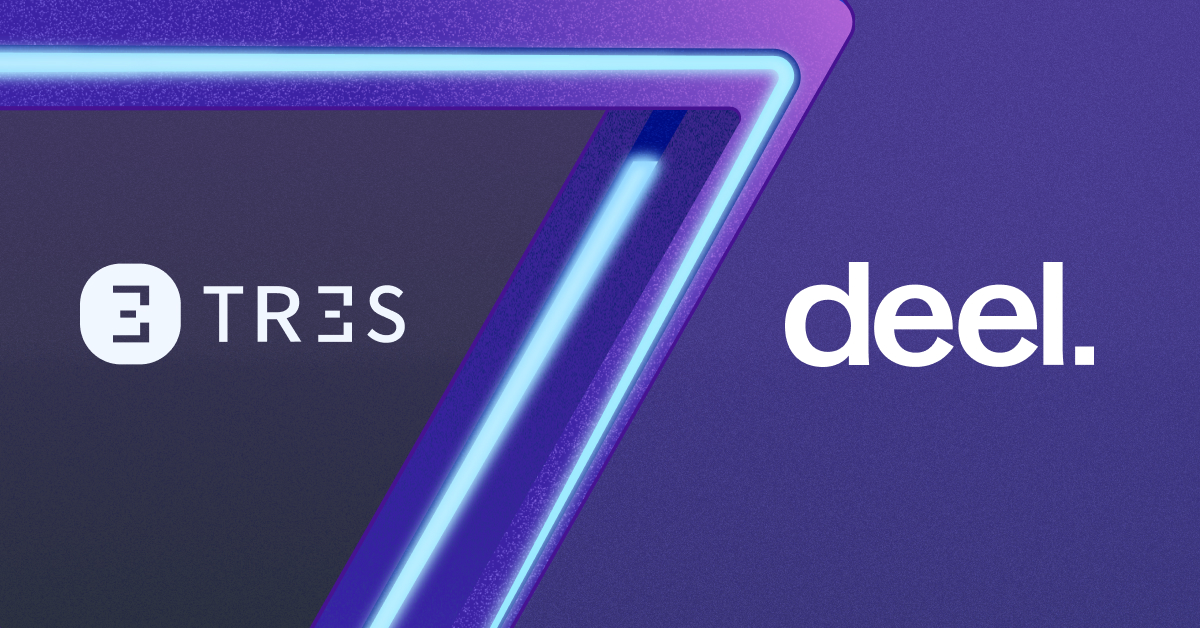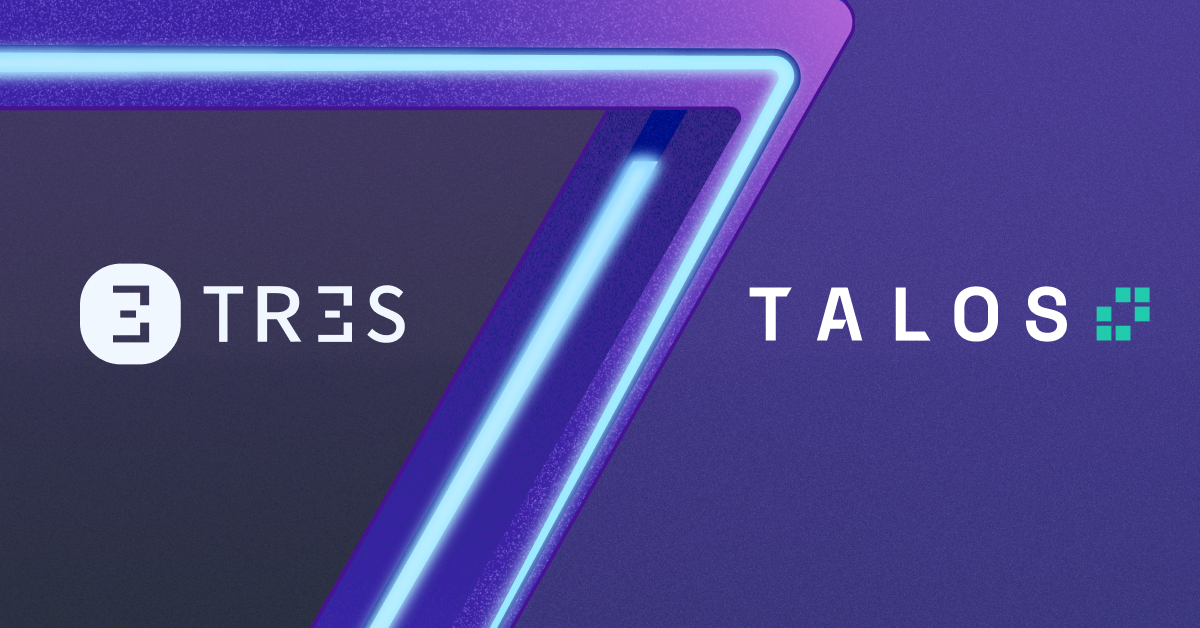
TL;DR: Forward-thinking crypto treasury teams are adopting automated systems, AI-driven decision making, and real-time capabilities to manage volatility, comply with regulations, and scale operations effectively. These trends, including AI-powered analytics achieving 90% forecasting accuracy and automated compliance systems, enable faster responses to market changes, reduce costs, and improve risk management. Successful companies integrate these technologies into unified platforms, building hybrid skills and embedding compliance into daily operations for sustainable growth in the $2 trillion digital asset market.
Introduction to Crypto Treasury Management Trends
Crypto treasury management has evolved from an experimental practice into mission-critical infrastructure. Organizations now manage billions in digital assets across complex portfolios involving multiple chains, DeFi protocols, custody solutions, and regulatory jurisdictions. The treasury operations that sufficed when Bitcoin represented 95% of holdings cannot support today’s diversified strategies spanning hundreds of tokens, yield-generating positions, and cross-chain deployments.
The catalyst for transformation is straightforward: manual treasury processes break at scale. CFOs managing $100M+ crypto portfolios discover that spreadsheet-based tracking creates material risk—positions go unreconciled, yield opportunities are missed, compliance gaps emerge, and audit trails become impossible to reconstruct. The operational overhead of manual treasury management compounds faster than portfolio growth, consuming finance resources that should focus on strategic capital allocation rather than transaction reconciliation.
Regulatory pressure accelerates the urgency. Treasury teams face evolving compliance requirements across jurisdictions—MiCA in Europe, enhanced IRS reporting in the US, licensing frameworks in Asia—each demanding real-time visibility into positions, transactions, and risk exposure. Manual systems cannot produce the documentation, audit trails, and real-time reporting that regulators now expect from institutional crypto operations.
For CFOs navigating this landscape in 2025, three foundational capabilities separate scalable treasury operations from those approaching breaking points: automation infrastructure that eliminates manual reconciliation overhead, real-time visibility across all positions and chains, and compliance architecture that produces audit-ready documentation automatically. Organizations implementing these capabilities position themselves to scale treasury operations efficiently while those relying on manual processes face mounting operational risk and regulatory exposure.
This playbook examines the treasury management infrastructure that leading crypto organizations are implementing in 2025, the specific capabilities required to manage modern crypto portfolios at institutional scale, and the operational frameworks that enable finance teams to move from reactive transaction processing to proactive strategic treasury management. The stakes extend beyond efficiency—they determine whether your treasury operations can support growth or become the constraint limiting organizational scaling.
Introduction
Crypto treasury management encompasses the strategic oversight and operational control of digital asset portfolios, liquidity management, risk mitigation, and financial planning within blockchain-focused organizations. Unlike traditional corporate treasury, crypto treasury teams must navigate unique challenges including extreme price volatility, 24/7 market operations, complex DeFi protocols, and evolving regulatory frameworks across multiple jurisdictions.
The current market dynamics present both significant opportunities and risks. Digital asset markets now represent over $2 trillion in total value, with institutional adoption accelerating across traditional finance, corporations, and government entities. However, this growth comes with increased scrutiny from regulators, heightened security concerns, and the need for more advanced financial controls.
Crypto companies today operate in an environment where market conditions can shift dramatically within hours, regulatory announcements can trigger immediate compliance requirements, and technological vulnerabilities can expose organizations to significant financial losses. This reality demands treasury operations that can respond instantly to changing conditions while maintaining strict oversight and control.
Trend analysis has become essential for strategic planning because the crypto treasury landscape changes so rapidly that last year’s best practices may be inadequate for today’s challenges. Organizations that fail to anticipate and prepare for emerging trends find themselves constantly reactive, struggling to implement necessary changes while managing daily operations. Successful crypto treasury teams are those that can identify patterns, anticipate regulatory shifts, and invest in technologies and processes that will serve them well into the future.
The stakes couldn’t be higher. Companies with sophisticated treasury operations can capitalize on market opportunities, manage risks effectively, and scale their operations confidently. Those with outdated systems face operational bottlenecks, compliance failures, and missed opportunities that can severely impact their competitive position.
Trend 1: Rise of Automated Treasury Solutions
Imagine managing a treasury operation where every cash flow forecast updates automatically, compliance checks run continuously in the background, and fund allocations happen instantly based on predetermined risk parameters. This level of automation is no longer aspirational—it’s becoming the standard for competitive crypto treasury operations.
Companies adopting automated treasury management systems report faster financial closes, improved accuracy, and greater agility in responding to market shocks by replacing manual, error-prone processes with real-time, connected platforms. This transformation represents a fundamental shift from reactive treasury management to proactive strategic positioning.1
The automation tools available today go far beyond simple transaction processing. Modern treasury automation platforms integrate directly with blockchain networks, centralized exchanges, DeFi protocols, and traditional banking systems to provide unified visibility and control. These systems can automatically execute hedging strategies, rebalance portfolios based on predefined parameters, generate regulatory reports, and even initiate emergency procedures when certain risk thresholds are exceeded.
Consider the comprehensive capabilities that treasury automation empowers teams with real-time cash visibility, smarter forecasting, operational scalability, and built-in compliance controls such as audit trails and policy enforcement. For crypto companies dealing with multiple digital assets, complex DeFi positions, and varying regulatory requirements across jurisdictions, these capabilities are transformative.2
Several driving forces are accelerating automation adoption in crypto treasury operations. The primary catalyst is the need for 24/7 operational capability—crypto markets never sleep, and manual processes simply can’t keep pace with round-the-clock trading opportunities and risks. Additionally, the complexity of managing diverse digital asset portfolios across multiple platforms requires computational capabilities that exceed human capacity for speed and accuracy.
Regulatory pressure provides another powerful incentive. Recent regulatory shifts emphasizing security and risk management are driving treasury teams to invest more heavily in automation and AI to maintain compliance and manage financial risks in complex environments like crypto treasury.3
The impact on efficiency and cost savings is substantial. Manual treasury processes that previously required hours or days can now be completed in minutes or seconds. Error rates drop significantly when human intervention is minimized in routine tasks, and teams can focus their expertise on strategic analysis rather than data entry and verification.
TRES Finance has emerged as a leading provider of automated treasury and accounting solutions that specifically address the unique challenges of crypto organizations. Their platform integrates seamlessly with major blockchain networks and exchanges, providing automated reconciliation, real-time reporting, and sophisticated risk management tools that enhance operational efficiency while maintaining the strict controls required in digital asset management.
The cost savings extend beyond operational efficiency. Automated systems reduce the need for large treasury teams while enabling existing staff to handle significantly larger volumes and more complex operations. Organizations report reducing their month-end close processes from weeks to days, and improving their ability to make data-driven decisions in rapidly changing market conditions.
Trend 2: Integration of AI and Data Analytics
The integration of artificial intelligence into crypto treasury management represents a quantum leap in analytical capability and decision-making speed. While automation handles routine processes, AI transforms how treasury teams understand market patterns, predict cash flows, and optimize financial strategies.
AI-powered tools like Treasury GPT and HighRadius AI cash forecasting software deliver up to 90% accuracy in cash flow forecasts and provide proactive liquidity optimization recommendations. This level of predictive accuracy enables crypto companies to make strategic decisions with unprecedented confidence, even in volatile market conditions.4
The AI tools transforming treasury management extend across multiple functional areas. Machine learning algorithms analyze historical transaction patterns, market data, and external factors to generate sophisticated cash flow forecasts that adapt continuously as new data becomes available. Natural language processing capabilities enable treasury teams to quickly analyze regulatory documents, market research, and news events for potential impacts on their operations.
Virtual assistants powered by AI are becoming increasingly sophisticated in their ability to support treasury decision-making. Virtual assistants and data analytics powered by AI enhance treasury decision-making by optimizing liquidity and improving the accuracy and speed of payments and risk assessments.5
The driving forces behind AI adoption center on the need for rapid data analysis in an information-rich environment. Crypto treasury teams must process enormous volumes of data from blockchain networks, market feeds, regulatory sources, and internal systems. Human analysts simply can’t process this information quickly enough to identify patterns, opportunities, and risks in real-time.
56% of treasury teams plan to build AI capabilities through a combination of external and in-house resources, focusing on linking AI investments to measurable gains in forecasting accuracy, working capital management, fraud detection, and process automation. This widespread adoption indicates that AI is moving from experimental technology to essential infrastructure.6
The impact varies significantly across different market segments. Traditional finance organizations are using AI primarily for risk management and regulatory compliance, focusing on fraud detection and anti-money laundering capabilities. DeFi-focused companies leverage AI for yield optimization, liquidity mining strategies, and protocol risk assessment. Hybrid organizations operating across both traditional and decentralized finance use AI to manage the complexity of cross-platform strategies and ensure consistent risk management across diverse investment approaches.
TRES Finance integrates AI capabilities throughout their platform to deliver better financial reporting across multiple blockchain networks and traditional financial systems. Their AI-powered analytics engine can identify discrepancies, predict cash flow patterns, and recommend optimization strategies that help crypto companies maximize their treasury performance while maintaining appropriate risk controls.
The future implications are profound. In 2025, AI agents are expected to guide treasury operations more comprehensively in managing risks, optimizing cash flows, and addressing compliance challenges including those posed by crypto-assets.7
This evolution points toward treasury operations where AI doesn’t just support human decision-making but actively manages routine strategic decisions within predefined parameters, freeing human expertise for high-level strategy and complex problem-solving.
Trend 3: Increased Regulatory Compliance Pressure
Picture a treasury team receiving notice of new regulatory requirements that must be implemented within 30 days across multiple jurisdictions. Previously, this scenario would trigger panic and require weeks of manual documentation review. Today’s leading crypto treasury operations handle these challenges seamlessly through automated compliance systems that adapt to regulatory changes in real-time.
The regulatory landscape for crypto treasury management has intensified dramatically, with new requirements emerging across major financial jurisdictions. From the EU’s Markets in Crypto-Assets (MiCA) regulation to evolving guidance from the SEC and CFTC in the United States, treasury teams must navigate an increasingly complex web of compliance obligations that affect everything from asset custody to financial reporting standards.
These regulatory shifts stem from several converging factors. Government agencies worldwide are responding to the mainstreaming of digital assets, with increased institutional adoption requiring more robust consumer protections and systemic risk controls. High-profile collapses and security breaches have amplified calls for stricter oversight, while the growing intersection between traditional finance and crypto markets demands clearer regulatory frameworks.
The scope of compliance requirements now extends far beyond basic registration and reporting. Modern crypto treasury operations must demonstrate sophisticated risk management capabilities, maintain detailed audit trails for all digital asset transactions, implement robust cybersecurity controls, and ensure compliance with anti-money laundering requirements that span multiple blockchain networks and jurisdictions.
Treasury automation is evolving beyond efficiency to deliver business intelligence that redefines banks’ role in corporate cash management, including compliance with anti-money laundering and crypto regulations. This evolution reflects how compliance has become integral to treasury technology rather than an afterthought.8
The impact on treasury operations is multifaceted and significant. Teams must allocate substantial resources to compliance monitoring, regulatory reporting, and policy updates. Traditional manual compliance processes are proving inadequate for the 24/7 nature of crypto markets and the complexity of cross-jurisdictional requirements. Organizations are discovering that effective compliance requires the same level of automation and real-time capability that they’re implementing for other treasury functions.
Smart treasury teams are responding by embedding compliance capabilities directly into their operational systems. Rather than treating regulatory requirements as separate processes, they’re integrating compliance checks into transaction workflows, automated reporting into their data systems, and regulatory monitoring into their risk management frameworks. This approach ensures that compliance happens continuously rather than as periodic exercises that create operational bottlenecks.
The technology infrastructure supporting compliance is becoming increasingly sophisticated. Modern treasury platforms can automatically classify transactions for regulatory purposes, generate reports in required formats for multiple jurisdictions, and maintain immutable audit trails that satisfy regulatory scrutiny. These systems adapt to regulatory changes through configurable rule engines that can implement new requirements without requiring extensive custom development.
TRES Finance has developed specialized compliance modules that address the unique challenges of crypto treasury operations. Their platform automatically tracks regulatory requirements across jurisdictions, generates compliance reports in real-time, and provides alerts when transactions or positions approach regulatory limits. This approach enables treasury teams to maintain compliance without sacrificing operational efficiency or strategic flexibility.
Strategic Recommendations and Conclusion
Successful navigation of the evolving crypto treasury landscape requires a strategic approach that balances innovation with risk management. Based on the trends explored throughout this analysis, treasury leaders should prioritize specific initiatives that position their organizations for sustainable growth while maintaining regulatory compliance and operational excellence.
The foundation of effective crypto treasury management in 2025 starts with technology infrastructure. Organizations should prioritize integrated platforms that combine automation, AI analytics, and compliance capabilities rather than implementing point solutions that create operational silos. 74% of corporations are investing in automation tools that provide AI-driven cash flow forecasting and real-time liquidity management, which help treasury teams promptly reallocate funds and adjust hedging strategies.9
This investment trend reflects the recognition that competitive advantage comes from comprehensive technological capabilities rather than piecemeal solutions.
Treasury teams should focus on building capabilities that enhance both efficiency and strategic insight. The most effective approach combines automated execution with AI-powered analytics to create systems that can handle routine operations while providing the data insights necessary for strategic decision-making. FIS launched Neural Treasury, an AI-powered, cloud-native suite combining AI, machine learning, and robotics to optimize liquidity, reduce operational risks, and enhance fraud mitigation in treasury operations.10
This type of comprehensive solution exemplifies the direction that successful crypto treasury operations are taking.
Regarding organizational structure, treasury teams should develop hybrid skill sets that combine traditional financial expertise with technology proficiency and regulatory knowledge. The complexity of modern crypto treasury operations requires professionals who can understand both the technical aspects of blockchain technology and the strategic implications of financial decisions. Organizations should invest in training existing staff while recruiting talent with cross-functional capabilities.
Risk management deserves particular attention in developing crypto treasury strategies. While automation and AI provide powerful tools for managing risk, they also create new categories of operational and technological risks that require careful consideration. Treasury teams should implement robust governance frameworks that define clear parameters for automated decision-making while maintaining human oversight for strategic decisions and exceptional circumstances.
Compliance should be integrated into operational processes rather than treated as a separate function. The most successful crypto treasury operations embed regulatory requirements directly into their technology infrastructure, ensuring that compliance happens automatically rather than requiring separate manual processes. This approach reduces compliance costs while improving reliability and audit readiness.
Looking toward the future, crypto treasury management will likely become increasingly automated and data-driven. Organizations that establish strong technological foundations today will be better positioned to adapt to emerging trends and regulatory requirements. The companies that thrive will be those that view treasury operations as a strategic capability rather than a support function, leveraging technology to create competitive advantages through superior cash management, risk control, and strategic agility.
The transformation of crypto treasury management represents both an opportunity and a necessity. Organizations that embrace automation, AI analytics, and integrated compliance capabilities will gain significant advantages in efficiency, risk management, and strategic positioning. Those that delay these investments risk falling behind competitors who can operate more efficiently and respond more quickly to market opportunities and challenges.
For CFOs and treasury leaders, the message is clear: the future of crypto treasury management belongs to organizations that can successfully integrate advanced technology with sophisticated financial strategy. The trends outlined in this playbook provide a roadmap for building treasury operations that can thrive in the complex, fast-moving world of digital assets while maintaining the controls and compliance necessary for sustainable growth.
The journey toward advanced crypto treasury management requires commitment, investment, and strategic planning. However, the organizations that make these investments today will be rewarded with treasury operations that provide competitive advantages, operational resilience, and the agility necessary to capitalize on the opportunities that lie ahead in the rapidly evolving crypto economy. Platforms like TRES Finance exemplify this shift, providing the infrastructure that enables finance teams to scale confidently in the Web3 era.
References
- CompanionLink — Treasury Management Trends 2025 ↩
- Treasury Curve — The Future of Treasury is Automated ↩
- Treasury-Management.com — Key Trends & Market Dynamics (H2 2025) ↩
- Global Finance — Best Treasury & Cash Management Awards 2025 ↩
- J.P. Morgan — Treasury in 2025 ↩
- PwC — 2025 Global Treasury Survey ↩
- Kyriba — 2025 Predictions ↩
- EY (PDF) — Four Trends Redefining Cash Management ↩
- HSBC — Real-Time Treasury: Smarter Liquidity ↩
- FIS — AI-Powered Neural Treasury Suite (Press Release) ↩
Interested in TRES?




